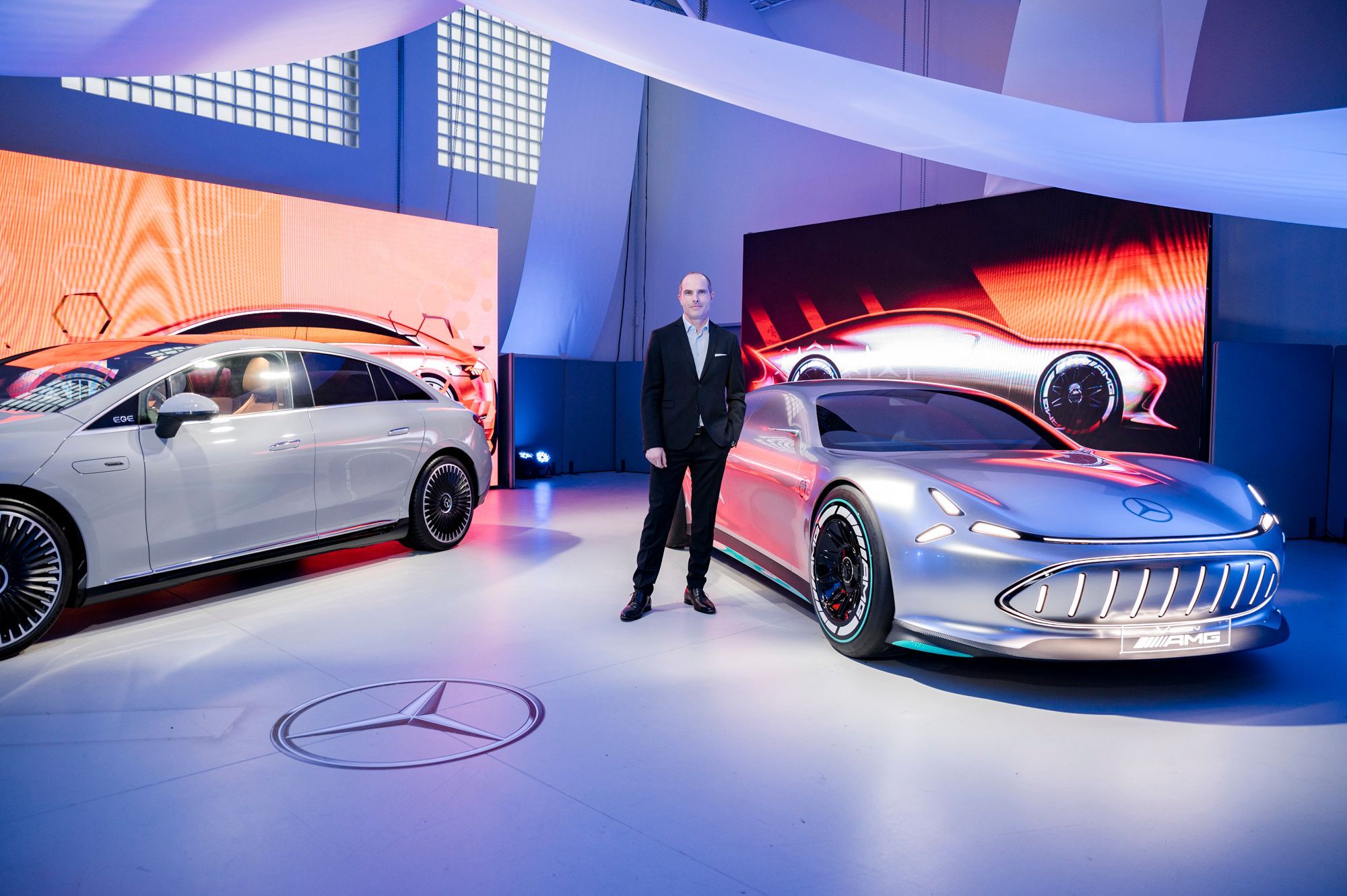The success story of Moholy-Nagy University of Art and Design of Budapest and Mercedes-Benz began twenty years ago. To mark the occasion, we interviewed Robert Lešnik, Head of Exterior Design at Mercedes-Benz.
The world-famous German automotive company and the Hungarian university celebrated 20 years of cooperation with a groundbreaking exhibition, SHIFT: Exhibition in two realities. It took place from 27 to 30 October 2022 and offered visitors a truly phygital experience. Walking through MOME’s emblematic spaces and gardens, visitors could not only explore the works of alumni in the form of posters, 3D-printed models, and animations but also digitally observe the individual design concepts through augmented reality. Thus, concept vehicles such as an SUV helping colonists in future Mars mission, or one racing through forest fires caused by climate change could be projected into the garden of the MOME campus, just as well as a virtual replica of a self-driving sports car, or a zero-emission luxury cruiser. This was followed by a brief visit to the Mobility Design Lab, the university’s vehicle design studio. As a closing moment of the exhibition, Robert Lešnik presented the all-electric Mercedes-AMG EQE model and the unique Vision AMG show car, which was brought to the MOME Campus straight from Stuttgart.
We asked the Head of Exterior Design at Mercedes-Benz about the joint program of MOME and Mercedes-Benz, the impact of digitalization on the automotive industry, and the future of mobility. Interview.
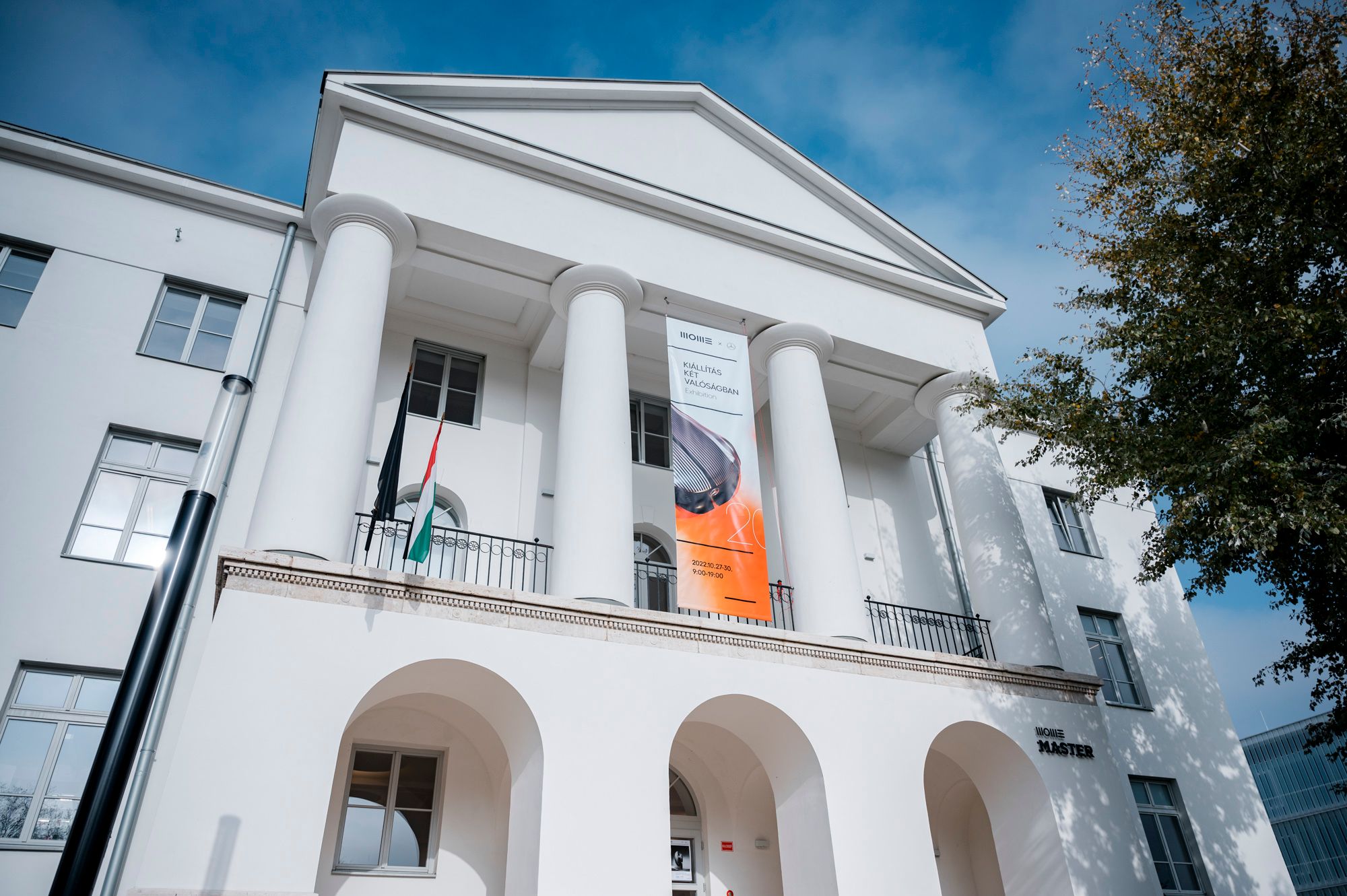
In your professional journey, you have worked for Volkswagen and Kia Motors, and you have been Head of Exterior Design at Mercedes-Benz for almost ten years now. Have you always dreamed of a career path like this? What do you find the most exciting about your profession?
I am originally from Slovenia, a country without a car industry. When I was younger, there was no internet or smartphones, so it was difficult to get access to information—including, for example, where to study car design. It was through many coincidences, hard work, and the help of certain people, that I had the chance to go to Germany to continue my studies. Looking back over the past decades, I’ve never been bored in this profession. Many say that I can only design cars and nothing else, but I think the car is one of the most complex products of industrial design. So, designing cars is a dream come true for me.
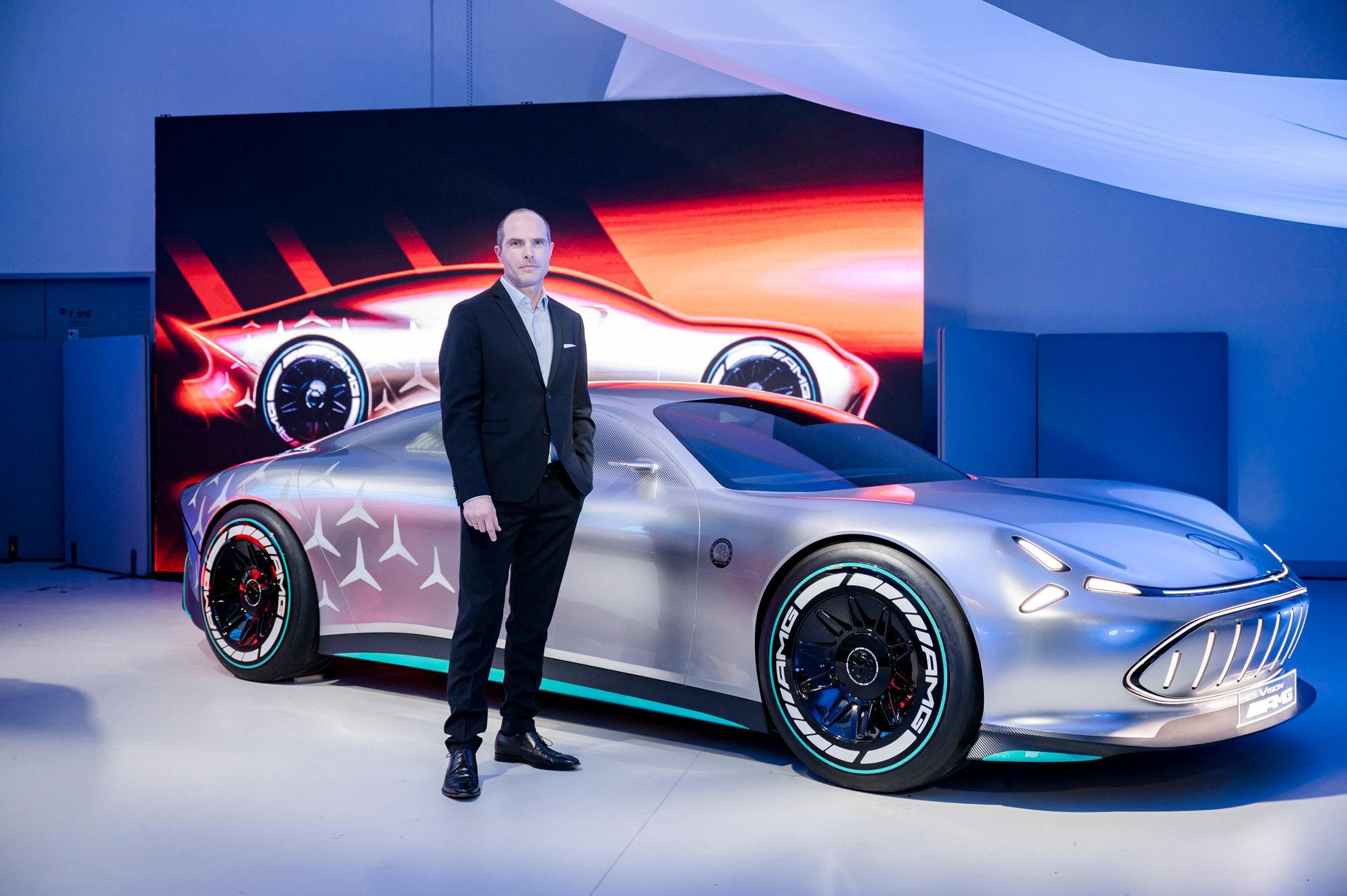
As you said, car or vehicle design is never boring, as it is a dynamically changing industry. The electromobility revolution has transformed the architecture of cars: it creates a new platform for designing vehicles, so the automotive industry’s original character seems to be changing.
Exactly. I’ve been working in this field for many years and I never got bored because something’s always happening. We live in a decade of changes: not only in the automotive industry or in car design, but in all areas of the world. So, of course, Mercedes-Benz as a company is also in a state of transition. Our plan is to offer a full electric portfolio by the end of the decade, so at some point, we will only be building electric cars. This is definitely an opportunity for the exterior and interior designers of cars. Just think about it: for decades, we have been designing cars around large internal combustion engines, so a third or a quarter of the vehicle space was filled by the engine alone. But with our new EQ electric models, like the EQE or the EQS, we have shown how space can be used more effectively: we extended the greenhouse of the car and created additional interior space for the customer.

“A car should tell a story not only with function but also with form,” said one student in one of our earlier interviews, adding that he finds it inspiring to build a designs around a backstory. In the joint program between MOME and Mercedes-Benz, the semester’s assignments are also structured around different stories. How does this happen in real life? What does the design process look like in the Mercedes-Benz studio when creating a new production model?
I’ve been helping MOME students for almost ten years now, and since then we’ve had quite a lot of projects around all kinds of topics and tasks. Outside the university setting, however, there are many more constraints to consider when designing a production car. This is exactly what I tell students: take the opportunity now and try to be as creative as possible. In one of the semester projects, for instance, they did a concept for a Mars rover; this is the exact kind of opportunity a designer can be part of as a student—creating crazy things. That’s what we want to achieve every semester, with different exciting topics, to get entirely novel ideas. The joint program of MOME and Mercedes-Benz really allows students to dream and gives them the space to be creative. Of course, to make sense of this, there must be a backstory: it’s not about just designing something. So, in the course of the term’s assignments, we also respond to a social issue: one semester, for example, we designed a car for India. The results of this project were astonishing, with ten completely different proposals. Later, when they work for a company, ten completely different proposals for a particular car model is no longer possible because of different regulations and restrictions. So, there’s a huge difference between being a car designer at university and later working for a company, but you have to learn to find the balance.
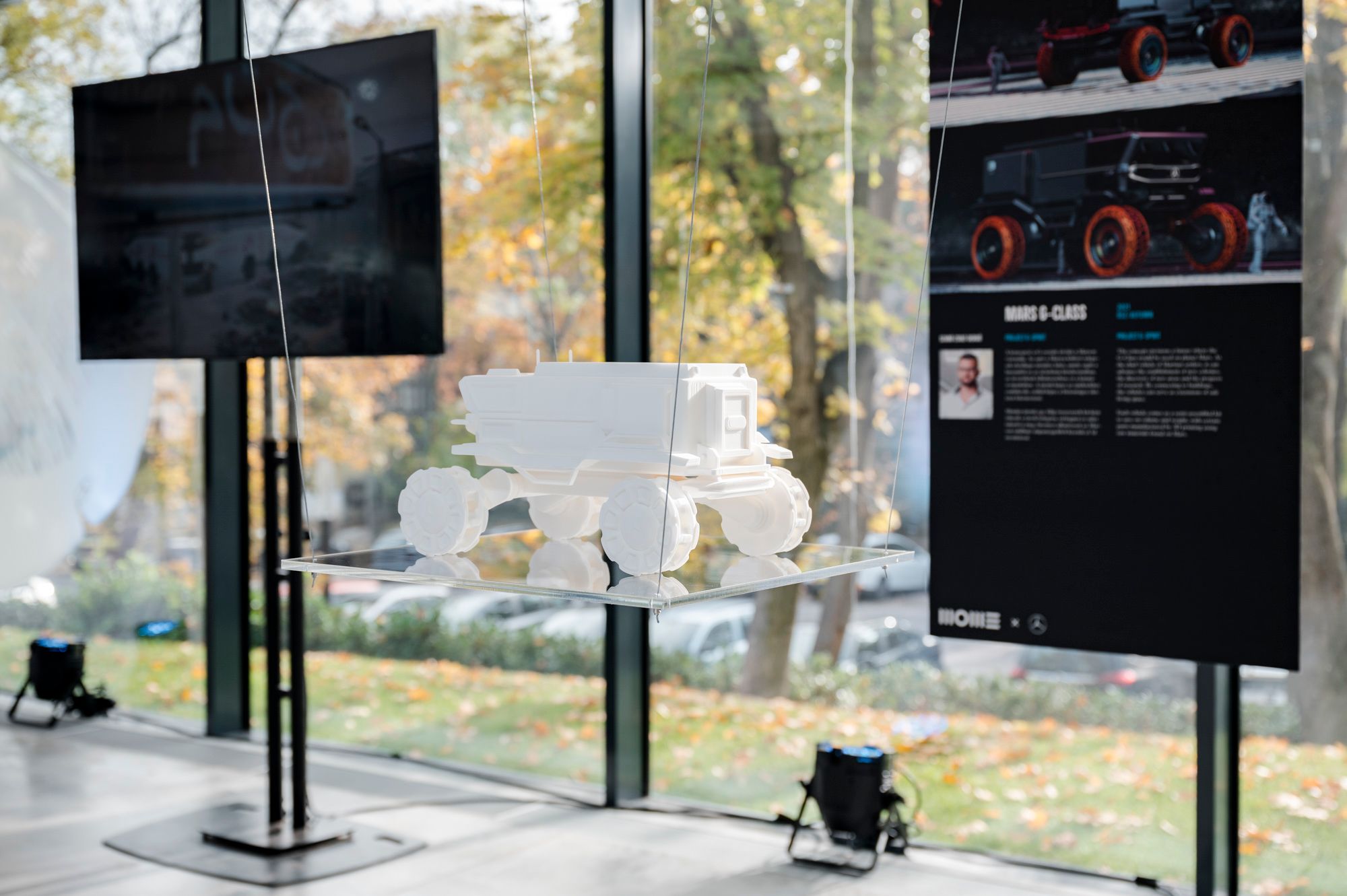
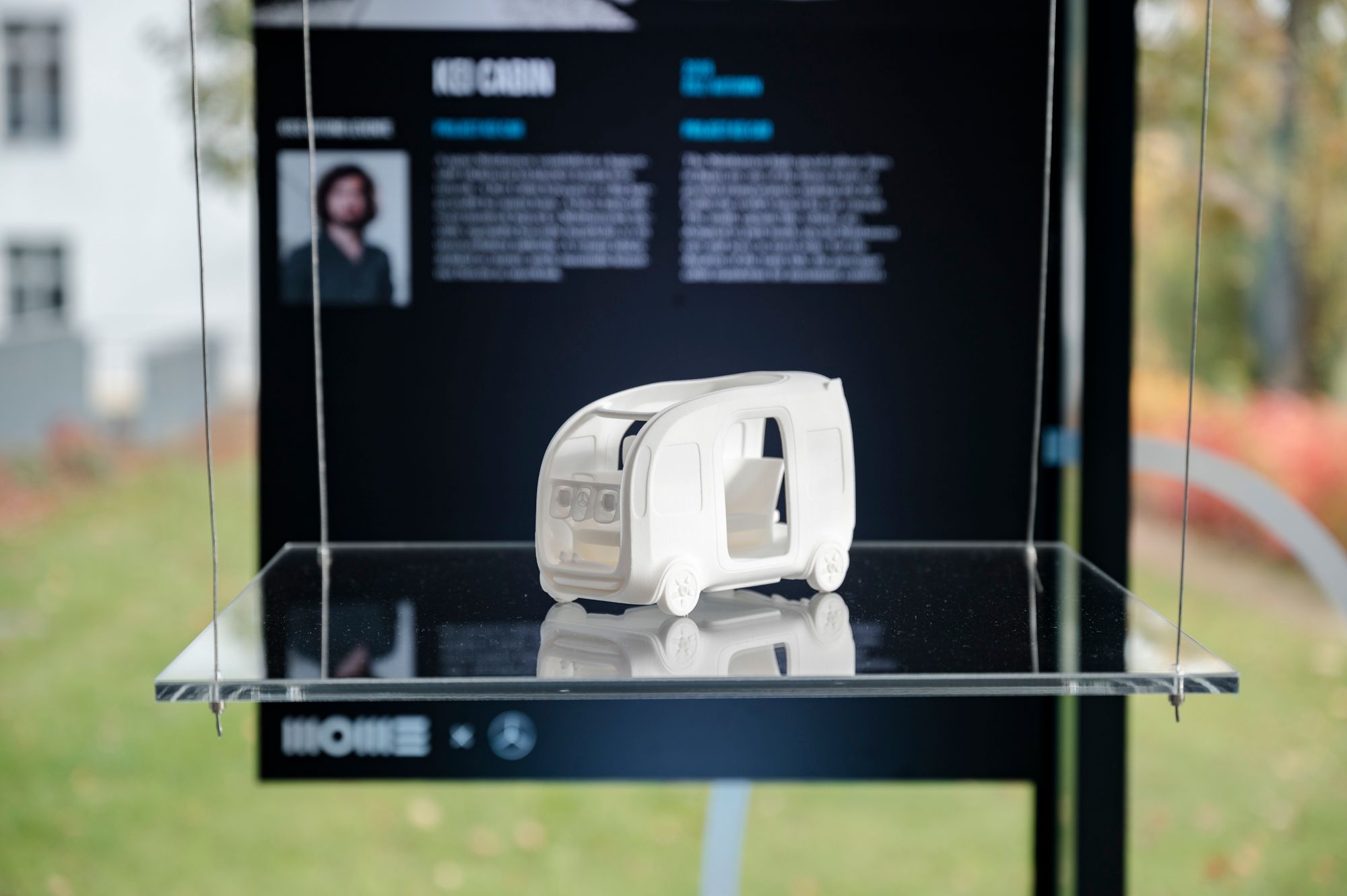
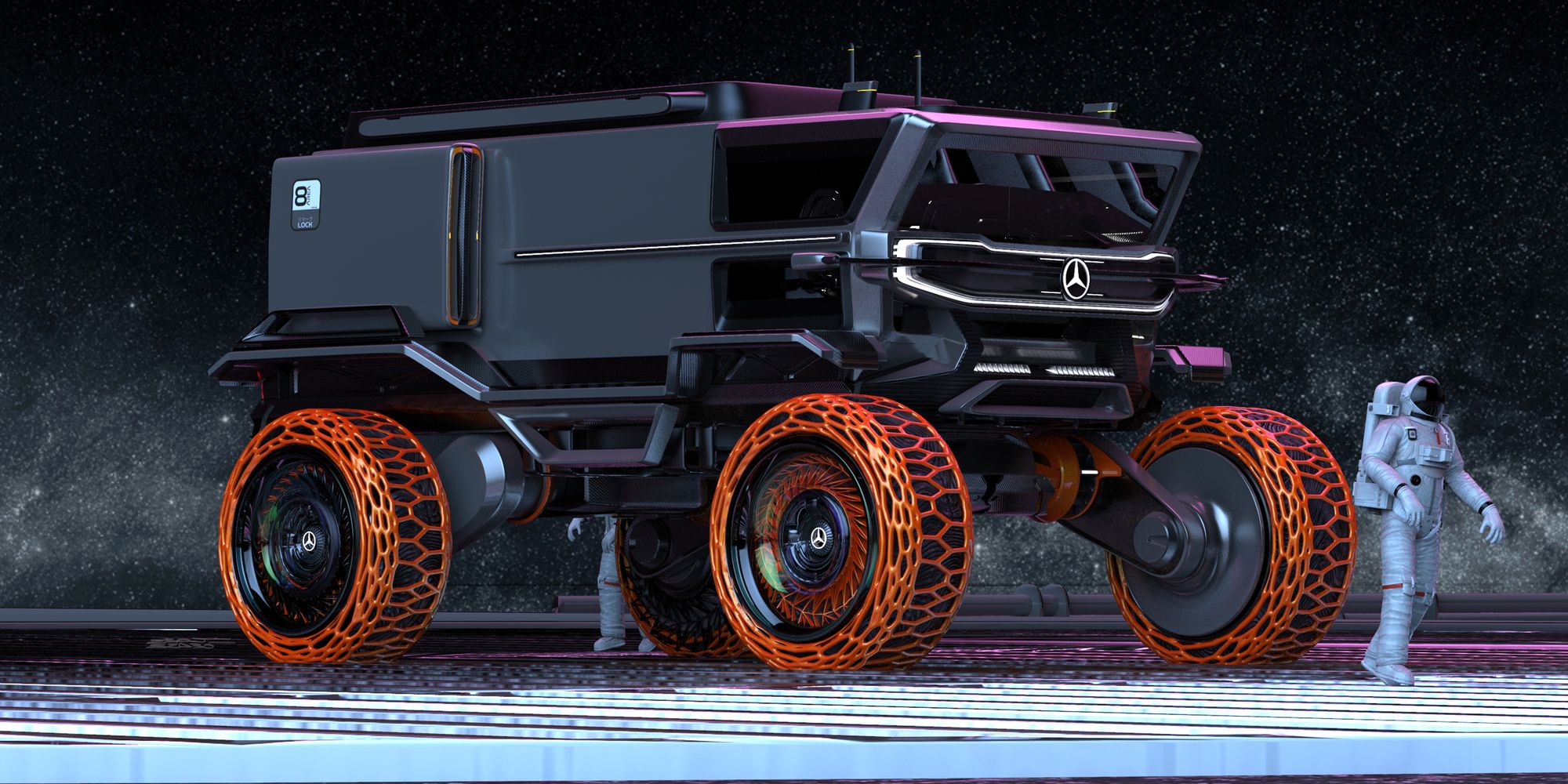
The collaboration between MOME and Mercedes-Benz is planned to extend beyond automotive design to explore the future of mobility. In recent years, the program has produced designs for a luxury marine vehicle, and even a taxi that can travel vertically between skyscrapers. Is your involvement in this program also helping you to find the aforementioned balance?
The relationship between the university and, let’s say, the industry, which has been going on for twenty years, yields a win-win situation. Not only for the students but also for us on the Mercedes-Benz side, as we get trainees who come to our studios and work with us on all kinds of projects. On the other hand, we also come here to the university from Mercedes-Benz headquarters and get inspired—we encounter a lot more crazy ideas here than in our studio. It would be too easy if the students had to design the next production vehicle: we probably wouldn’t mutually benefit from it.
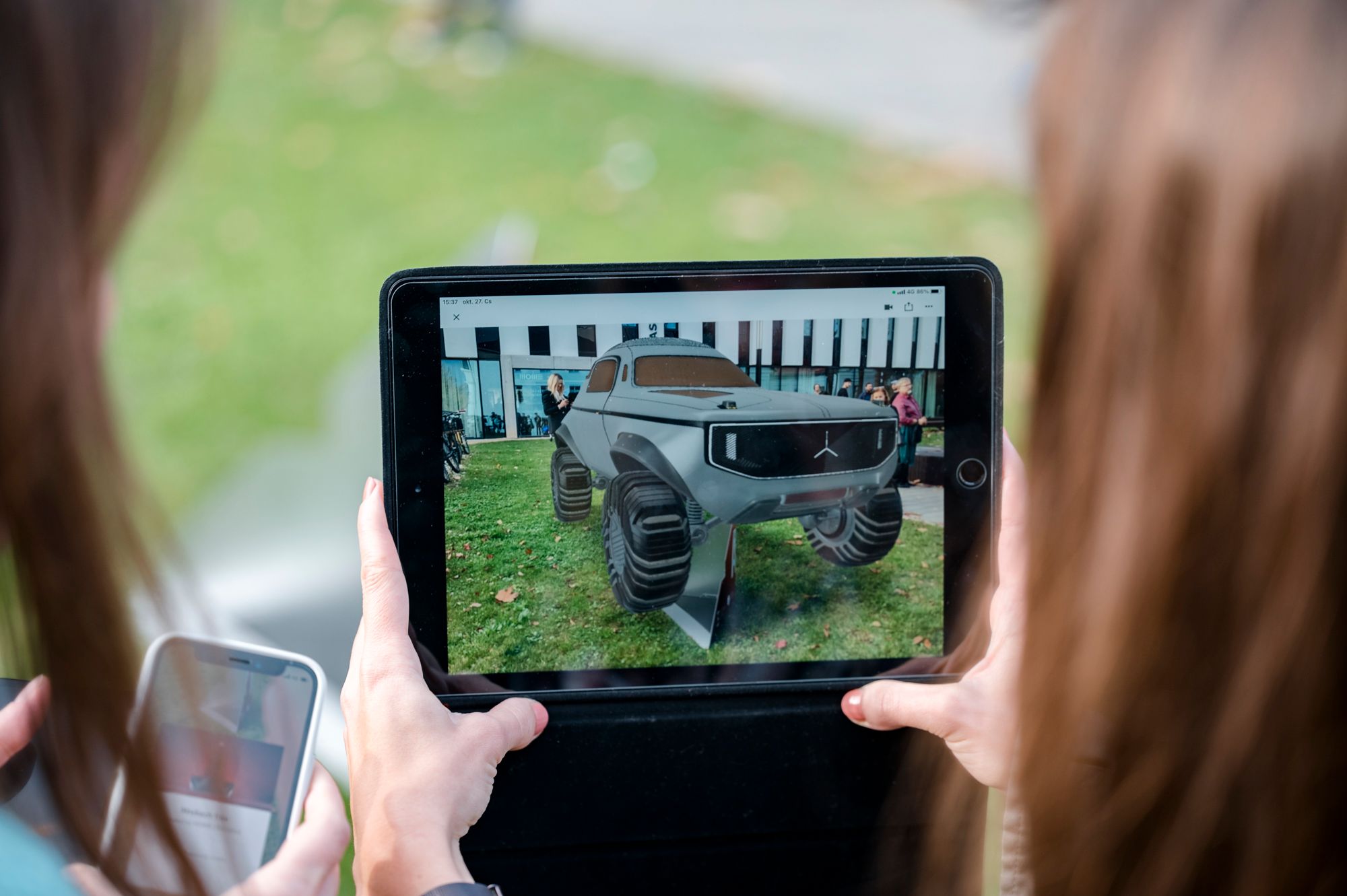
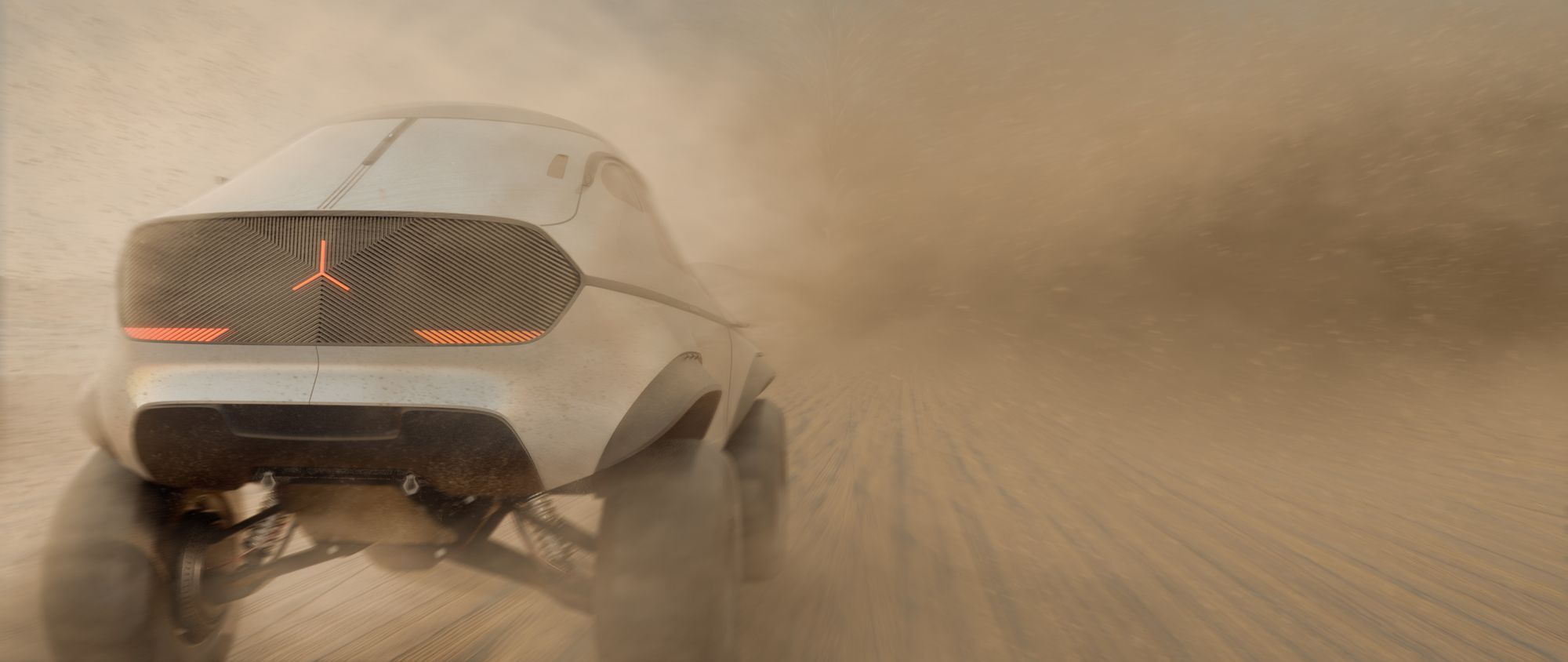
Mercedes-Benz regularly introduces concept cars based on ideas ranging from the very sci-fi-like to the not-so-far-fetched. For example, the Vision AVTR, unveiled in 2020, is a truly daring concept, created in collaboration with the team that designed the visual world for the movie Avatar. But the Vision EQXX, which debuted this year, has a range of over 1,000 km on a single battery charge. What is the real purpose of concept cars?
In car design, there’s a long history of presenting new ideas in the form of a concept car or a show car. Since a car’s design and development process takes about four years, we like to give a taste of it every now and then, before something reaches the market. At Mercedes-Benz, we can talk about two different types of such cars. One is the Concept, which is closely linked to the production cars that will be produced in a few years or more. The other type is the so-called Vision, which will not be produced, but it’s still very important for showcasing creativity and new ideas, like the Vision AVTR you mentioned. Nevertheless, even Vision cars have certain features or ideas that we later incorporate into the production cars, such as the efficiency of the Vision EQXX, which will be launched in 2024. But so is the front-end of the Vision AMG presented at MOME: just look at those star-shaped headlights and imagine something like this on the road in the near future.
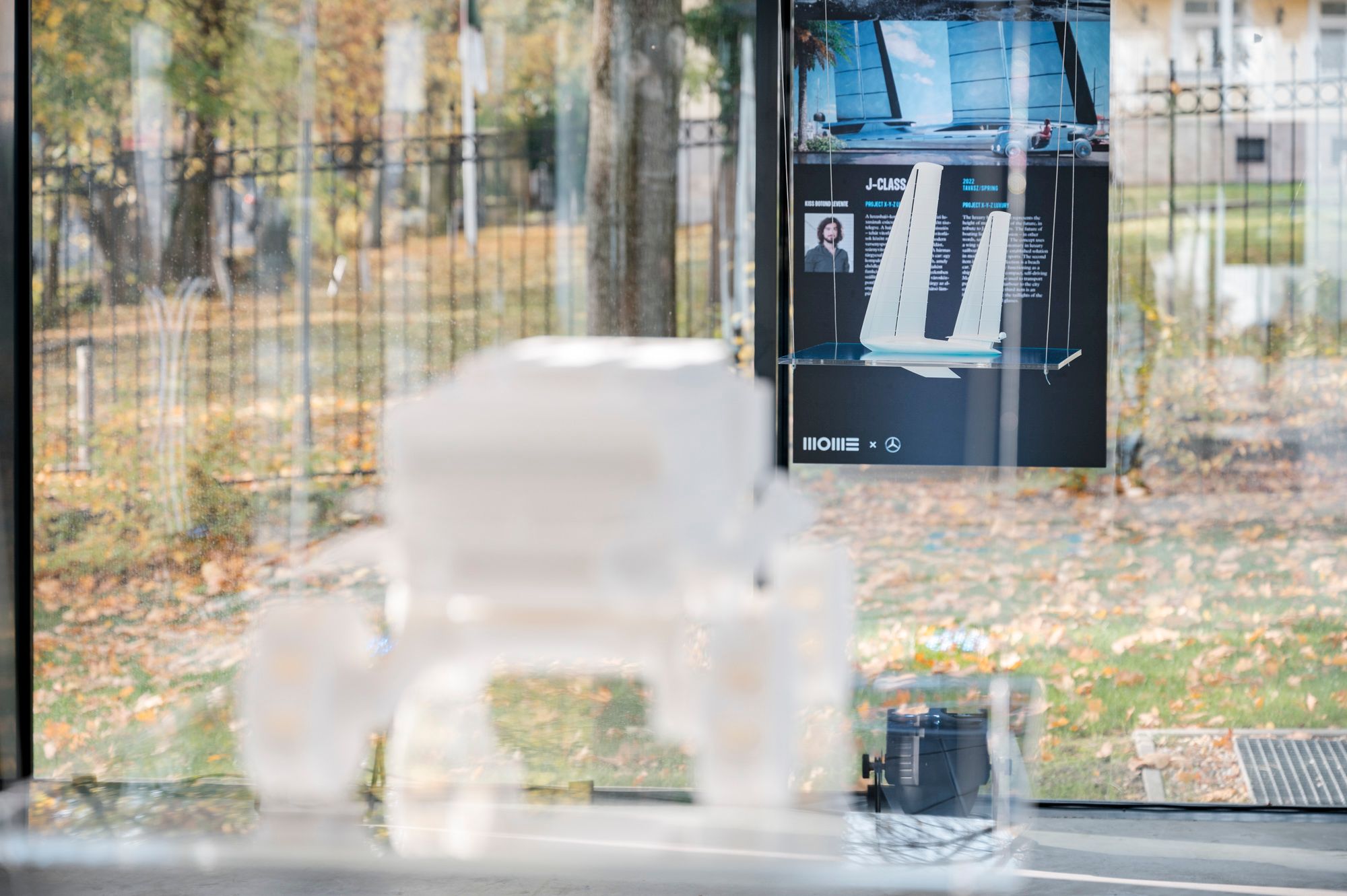
We are increasingly discussing the creation of a more liveable urban environment and sustainable urban transport. Therefore, micromobility devices such as electric bicycles, e-scooters, or carsharing systems are becoming more and more common. But these vehicles are no more in our possession. From a user perspective, do you think the design of cars or vehicles will remain similarly important in the future? Or will the user experience focus more on different digital solutions rather than aesthetics?
I’m absolutely convinced that the shape of a vehicle, particularly a passenger car, will be as important as ever. Probably even more, because engineering will get more and more standardized, just think of the electric engines, batteries, and cells. The biggest changes, however, will occur inside the vehicle, and the connectivity and digital content will gain importance. As we say at Mercedes-Benz: “We build the world’s most desirable luxury cars.” This applies to everything we design.
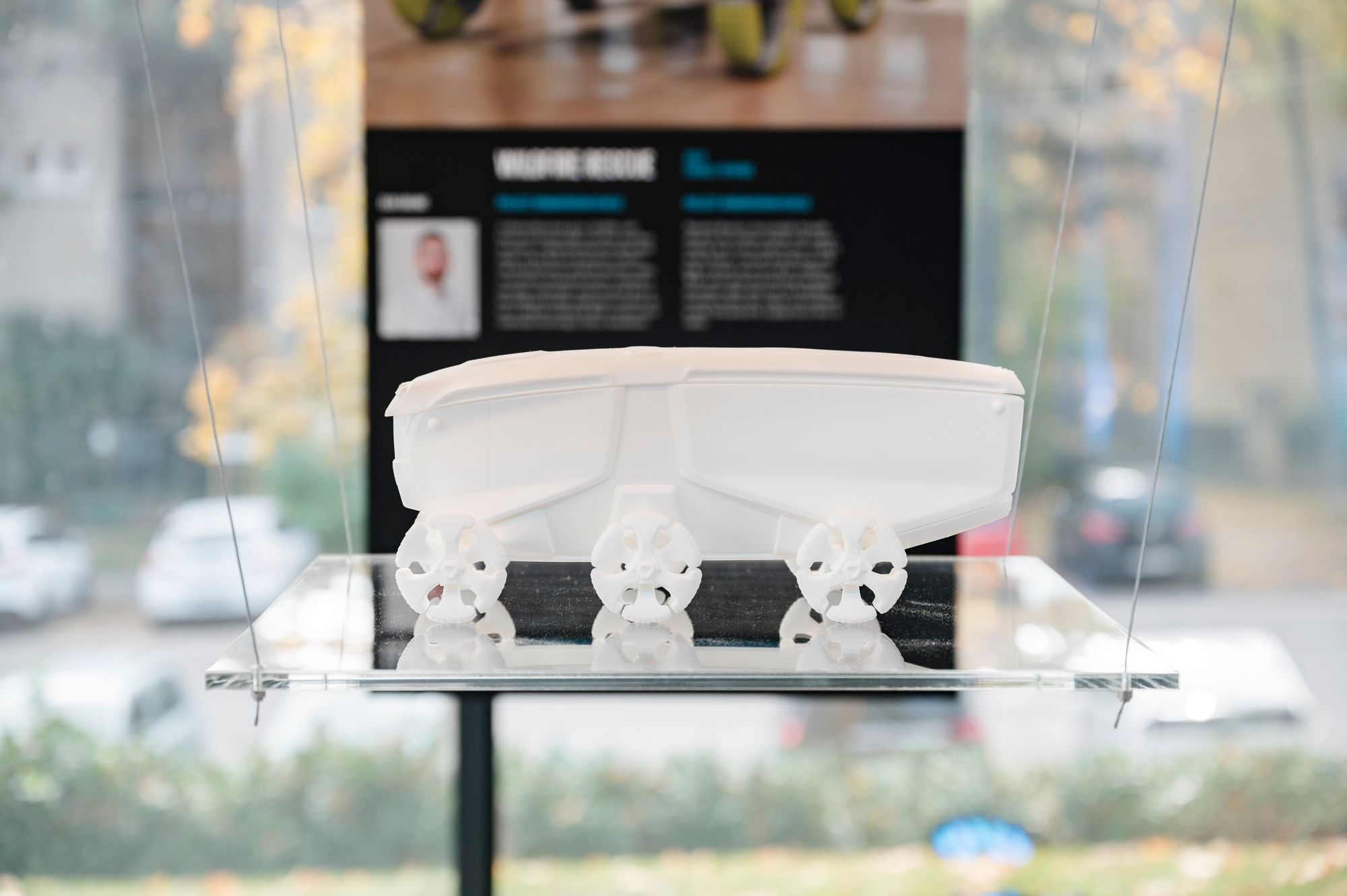
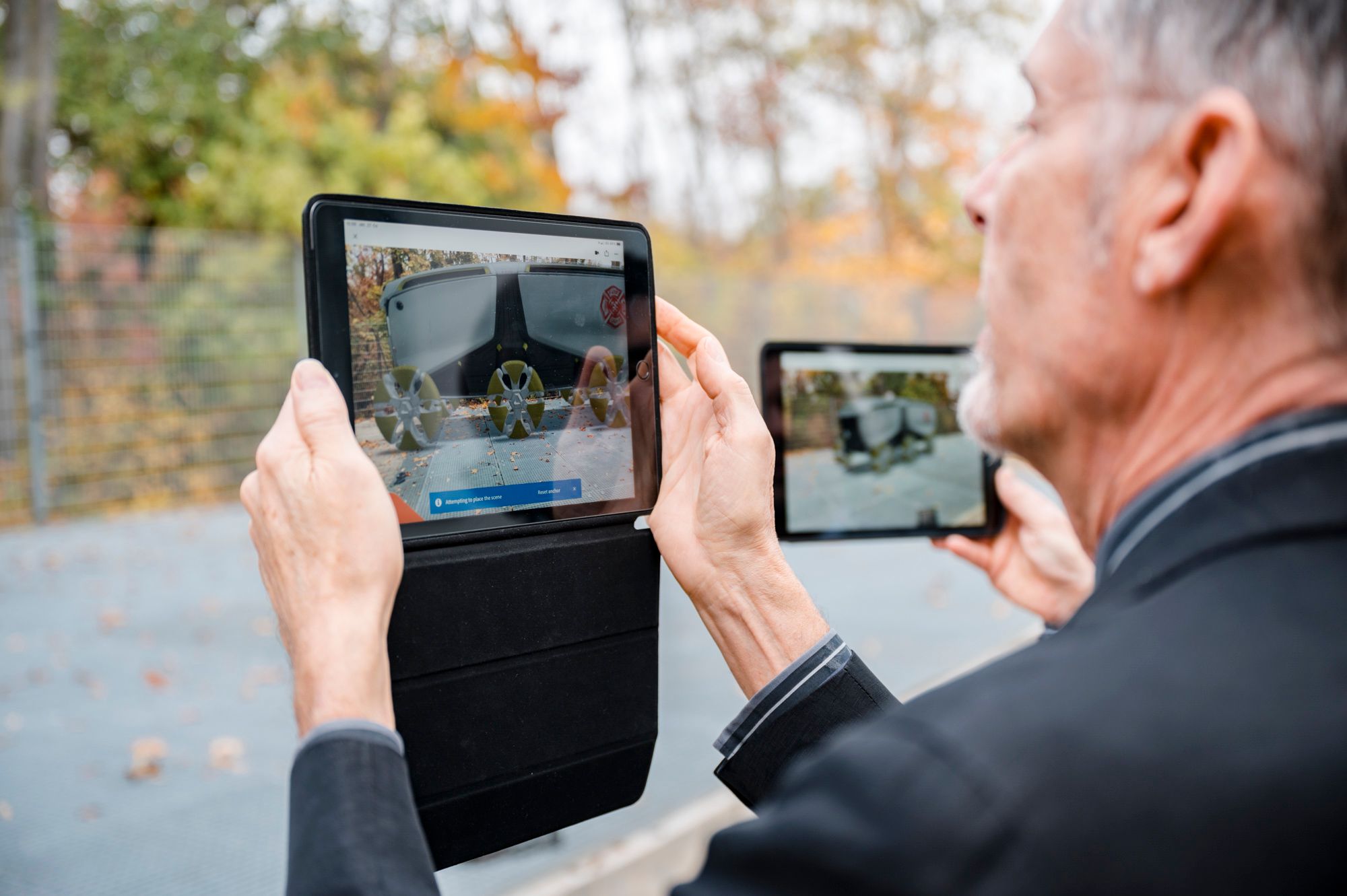

What is your boldest vision of the vehicle of the future?
Mercedes-Benz has two different divisions: one is responsible for forward-looking, advanced design, while the other, which I lead, focuses on production cars. In other words, the car models that we create are closer to being on the market. If you ask me, who works on production cars, about my craziest idea, I think one of the biggest challenges for the future will be how we deal with autonomous vehicles.
Finally, as an experienced designer, what advice would you give to the next generation of car designers?
When I was younger, I really had to fight for my goals: I made three attempts to get into the university. I didn’t give up after the first difficulty and look for a different path, I stuck to my dream. That’s what young people somewhat lack today: they try something and if it doesn’t work out, they move on to something else. For most of them, it’s as if it’s not important enough to make it as a car designer. At Mercedes-Benz, that’s also our job, in the end, to select the people who are patient and determined enough to stick to their plan. My advice? Have a goal as a designer, and try to achieve it!

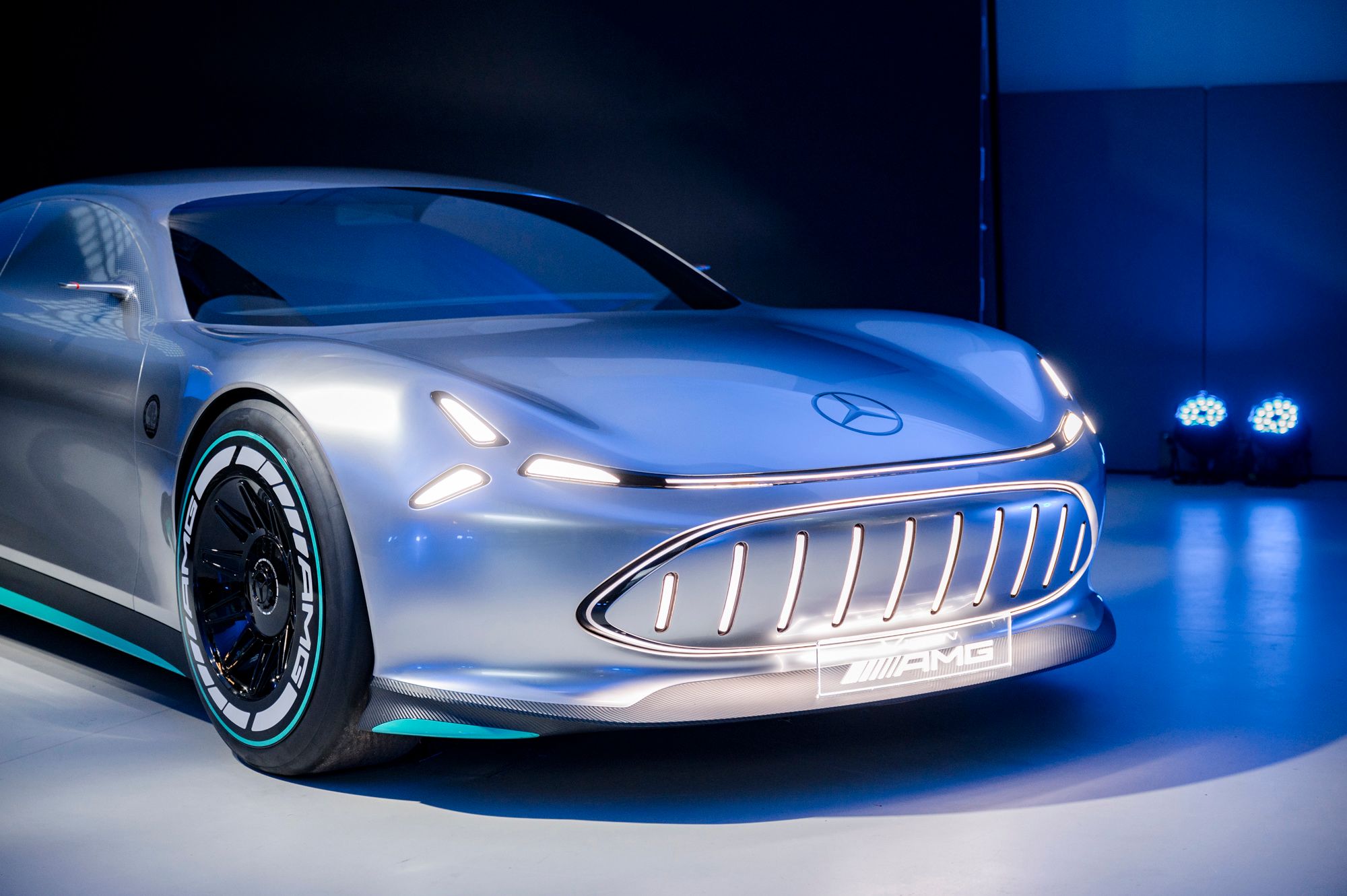
More information about the 20 years of cooperation between MOME and Mercedes-Benz is available in the SHIFT publication.
Photos: Máté Lakos, MOME
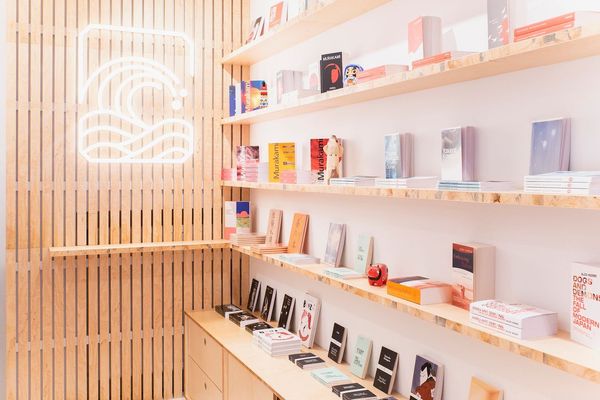
Warsaw bookstores treasured by locals | TOP 5
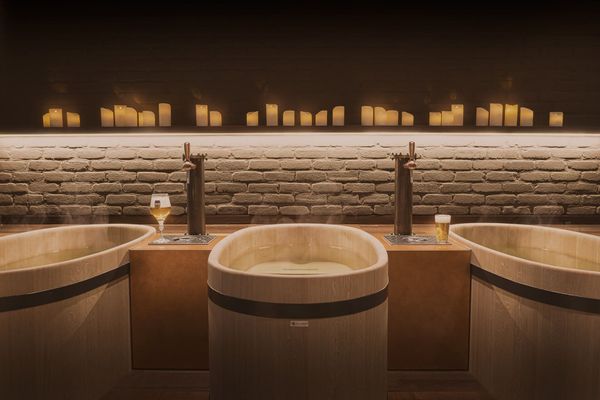
Czech beer spa traditions introduced in Belgium










